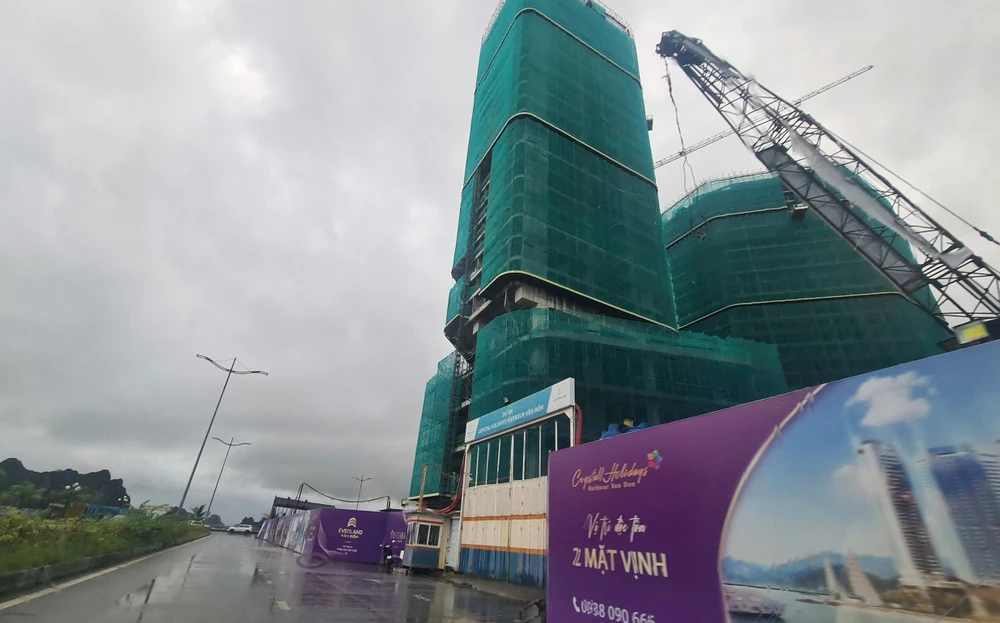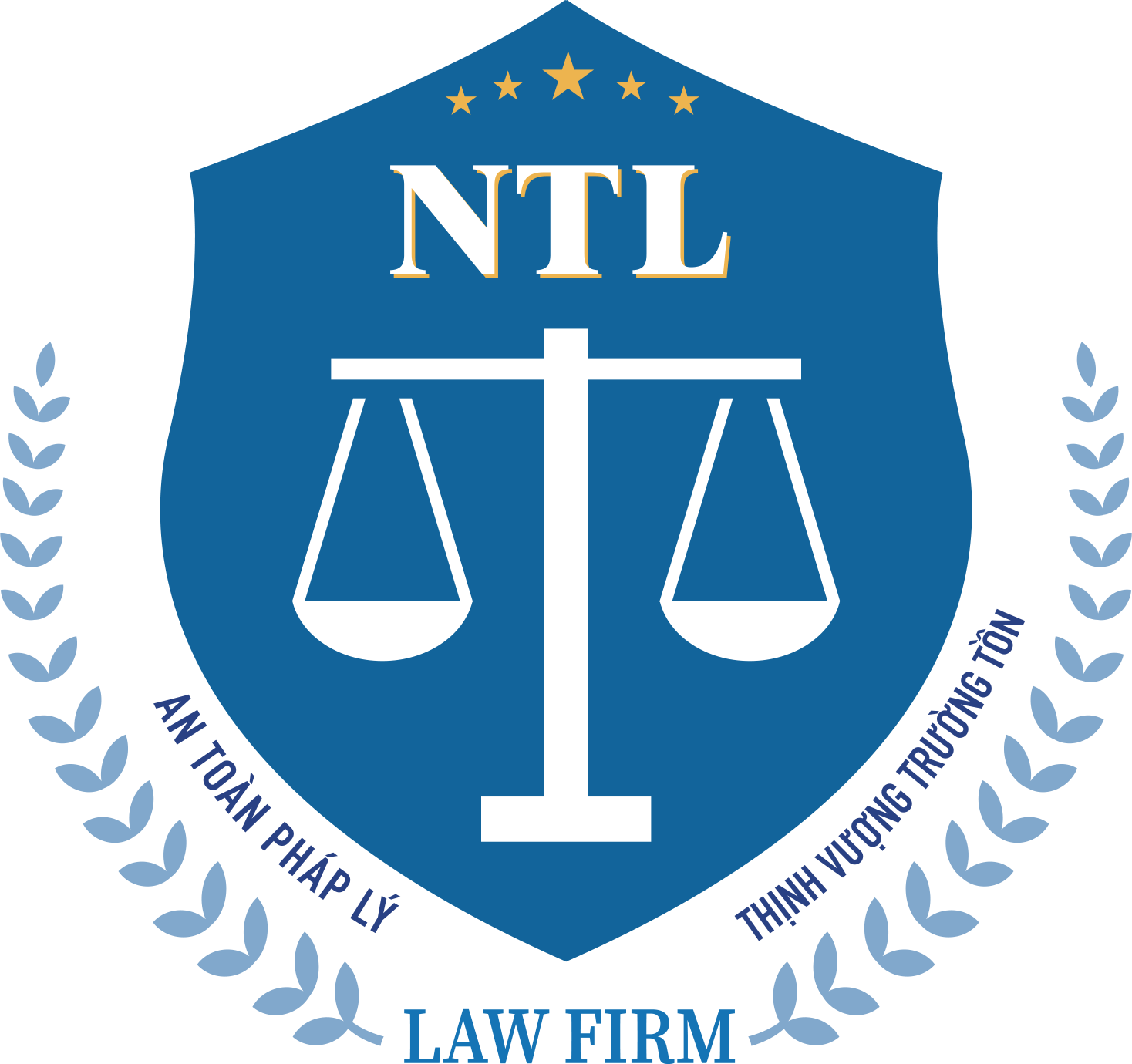
VIETNAM REAL ESTATE MARKET: CURRENT SITUATION AND SOLUTIONS
VIETNAM REAL ESTATE MARKET: CURRENT SITUATION AND SOLUTIONS
Nguyễn Thị Thu Hương
Phan Thị Thanh Huyền
Phạm Phương Nam
Vũ Thị Hoàn
Faculty of Natural Resources and Environment – Vietnam Academy of Agriculture
Ngô Trung Thành
Faculty of Social Sciences – Vietnam Academy of Agriculture
Abstract:
The real estate market plays an important role in stabilizing the macroeconomy and promoting the growth of each country. The research aims to assess the current situation of the real estate market and forecast the developments of the real estate market. At the same time, the research suggests some solutions to develop a stable and sustainable real estate market in the coming years. To promote the recovery and development of a safe, healthy, and sustainable real estate market, it is necessary to improve policies and laws on the real estate market; manage real estate finance and credit strictly; improve the quality of land use planning at all levels and enhance the management responsibilities of state agencies.
Keywords: Policies, solutions, real estate market.
I. INTRODUCTION
The real estate market is fully understood as the place where transactions of buying, renting, and leasing real estate are conducted by the supply, demand sides, and real estate brokers (Phan Thị Thanh Huyền et al., 2022). The real estate market is one of the markets with a significant position and role in the national economy (Wang, 2003; Bouchouicha & Ftit, 2012).
The proportion of real estate in the total wealth of society varies between countries but typically accounts for around 40%. Activities related to real estate account for up to 30% of the total economic activities (Hoàng Văn Cường et al., 2017). Therefore, market fluctuations affect various markets and impact life, employment, security, and social order (Phan Thị Thanh Huyền et al., 2022). Understanding the current state of the real estate market is particularly important for forecasting future market developments and formulating management policies to promote stable market growth while mitigating negative impacts on the national economy (Nam & Phuong, 2022).
In recent years, the Vietnamese real estate market has experienced complex developments due to factors such as epidemics and economic recession. Especially towards the end of 2022, the real estate market almost lost liquidity. This study aims to evaluate the current state of the primary real estate market in Vietnam and forecast its developments, thereby proposing solutions for sustainable market growth to contribute to the socio-economic stability of the country.
II. RESEARCH METHODS
This research employs analytical, comparative, and synthetic methods to understand and evaluate the shortcomings and inadequacies in the operation of the real estate market as a basis for proposing solutions for market development. Data for this article were primarily collected from the Ministry of Construction’s electronic information portal to evaluate and analyze the current state of the real estate market. Additionally, the article utilizes expert methods, conducting in-depth interviews with managers at real estate exchanges and related scientists to understand the limitations, difficulties, and inadequacies of the real estate market, as well as to consult on solutions for developing Vietnam’s real estate market in the coming period.
III. RESEARCH RESULTS AND DISCUSSION
- Current State of the Real Estate Market in Vietnam
1.1. Real estate supply
In 2023, new real estate projects continued to decrease compared to previous years. According to the report of the Vietnam Real Estate Brokers Association, the real estate supply showed a significant downward trend in 2022. The supply on the market mainly belongs to the mid and high-end segments, with prices that are not suitable for the majority of people in actual need of housing.
The absorption rate in the third quarter of 2022 was only 33.5%, a sharp decline compared to the first half of the year; the number of transactions decreased by more than 50% compared to the same period in 2021. The total new supply to the market of residential and resort products in 2023 was 8,675 products (Ministry of Construction, 2023), of which social housing supply accounted for 1,042 units, making up 12%; commercial service housing accounted for 7,603 units, lots, making up 87.6% of the total supplied products.
Thus, the structure of social housing products is still limited, and commercial housing continues to dominate the supply in the real estate market. In fact, the widespread planning of resort areas and commercial housing projects from previous phases has led to an oversupply that exceeds the demand and purchasing power of the people.
According to statistics from DKRA Group, by the first half of 2023, there were over 42,000 condotel units and approximately 30,000 coastal commercial villa and townhouse products remaining unsold. Additionally, about 24,000 resort real estate units had been handed over but were not yet put into operation.
Table 1. Number of projects approved by competent authorities from 2021 to 2023
Product type | 2021 | 2022 | 2023 | Total (Projects) | Percentage (%) |
Commercial housing | 40 | 21 | 6 | 67 | 80.72 |
Social housing | 4 | 5 | 3 | 12 | 14.46 |
Tourist real estate | 1 | 2 | 0 | 3 | 3.61 |
Industrial real estate | 0 | 0 | 0 | 0 | 0 |
Office and commercial centers | 1 | 0 | 0 | 1 | 1.20 |
Total | 46 | 28 | 9 | 83 | 100 |
Source: Ministry of Construction, 2024
1.2. Real Estate Transactions
Transactions in the real estate market began to show a downward trend from early 2022. The transaction volume at this time was only 45.5% of that at the end of 2021. The drop in transaction volume intensified when some banks reported reaching their credit limits for real estate loans (Ministry of Construction, 2023).
According to some research units, housing demand has reached its lowest point in the past five years. The supply-demand imbalance in the real estate market is increasingly widening. In reality, real estate developers primarily focus on the high-end housing segment due to its high profitability. Conversely, the social housing segment, although having high demand, is less profitable and faces difficulties in project implementation, such as complex procedures and long waiting times for procedural resolution.
In Decree 49/2021/ND-CP, the Government amended several provisions on the development and management of social housing in the direction of administrative procedure reform, clarifying regulations to be more easily implemented.
Since mid-2022, many reputable real estate enterprises have registered to implement social housing construction with prices below 20 million VND/m² in some localities. However, according to records, many projects still face procedural obstacles, have not accessed capital, land funds, or are concerned about profit calculation methods, etc. (Ministry of Construction, 2023).
1.3. Credit Debt in Real Estate Business Activities
According to the Ministry of Construction (2023), credit debt in real estate business activities has gradually increased over the years, with the debt ratio of different types of real estate ranging from 4.1% to 26.6%, corresponding to resort, eco-tourism, and other real estate investment and business projects. Thus, there is a clear disparity in the ratio between the two real estate business segments.
Table 2. Credit Debt in Real Estate Business Activities (Unit: billion VND)
Real estate business activity | Credit amount | Total | ||
2021 | 2022 | 2023 | ||
Credit debt in real estate | 617,509.34 | 2,140,170 | 3,861,912 | 6,619,591.34 |
Guarantee balance for future housing | 900,002.53 | 390,000 | 108,803 | 1,009,195.53 |
Total | 1,517,511.87 | 2,530,170 | 3,970,715 | 7,628,786.87 |
Source: Compiled data from the Ministry of Construction, 2024
By mid-2022, the real estate capital flow faced difficulties and interest rates increased, making investors hesitant. Real estate prices showed signs of stagnation, and some projects had to use flexible sales policies, discounts, interest rate support, debt grace periods, loan commitments, buybacks, etc. Many real estate enterprises were forced to stop, delay, or postpone many projects under implementation and even lay off employees due to lack of capital while revenue declined due to weak liquidity. Many investment projects had to stop and wait for procedural resolutions. The difficult market also limited the business activities of real estate service enterprises, forcing some to suspend operations or close their businesses.
At the beginning of 2023, bank interest rates began to show a downward trend. However, the real estate market was affected by many factors, including the increased inspection and supervision of real estate projects by the State, resulting in a sharp decrease in supply and transaction volume, and prices either stabilized or decreased locally in some areas. Limited real estate credit made it difficult for both investors and customers to access loan capital, and many projects reached the due date for loan repayments to banks with initially committed high interest rates, making the practice of selling at cut prices common.
Figure 1. 2023 Savings Interest Rates (12-month term)
January | 12% |
Febuary | 12% |
March | 9.2% |
April | 7.2% |
May | 7.2% |
June | 6.8% |
July | 6.3% |
August | 6.3% |
September | 5.8% |
October | 6.2% |
November | 4.4% |
December | 5% |
Source: Looking back at a year of ‘free fall’ in deposit interest rates, Tiền Phong
- Real Estate Market Trends
From the above analyses, it can be seen that the demand for social housing for low-income individuals continues to increase and needs to be assured by the market supply. Supply of high-end housing and resort products will decrease as the supply has exceeded the demand. Industrial real estate and export processing zones tend to increase due to rising domestic and foreign investment and incentives from trade agreements, flexible mechanisms, policies to attract investment, and infrastructure improvement. This also increases the demand for rental housing for workers in industrial and export processing zones.
In the current market context, the housing segment targeting actual buyers will lead the market. This includes reasonably priced land and affordable or mid-range apartments. Social housing projects priced between 1-2 billion VND per unit are particularly anticipated and are forecasted to create a boost for the overall market. Additionally, when the 2024 Law on Land, the Law on Housing, and the Law on Real Estate Business come into effect, the opening of credit capital sources and continued FDI inflows into Vietnam will activate a new upward cycle. The real estate market will overcome the downturn despite the global economy’s continued recession impacting the domestic economy.
In 2024, with the target of GDP growth from 6-6.5%; per capita GDP reaching 4,700 – 4,730 USD, the Vietnamese economy will create momentum for the real estate market’s recovery and growth. Besides, Decree 44/2022/ND-CP of the Government contributes to the transparency of the real estate market information, helping management agencies participate in market regulation, project legal control, providing homebuyers with project information and data, avoiding cases of purchasing project products that are not eligible for sale (Government, 2022). These also build confidence among homebuyers, helping the real estate market develop more healthily and sustainably in the following years.
Since real estate is often the preferred choice as a safe haven, stable, and value-adding over time, it has many advantages over other channels like gold, stocks, and savings deposits. Furthermore, with land price management regulations under the 2024 Law on Land, the state’s regulated prices will tend to increase, forecasting the risk of inflation rising, making real estate still the first channel many people think of. Although the real estate market still faces many difficulties, it is possible that the real estate market will thrive with a legal system that is synchronized between the 2024 Law on Land, the Law on Real Estate Business, and the Law on Housing.
- Solutions for Developing the Real Estate Market
3.1. Improvement of Policies and Laws on the Real Estate Market
Improving the guidance documents for the implementation of the revised Law on Housing, the revised Law on Real Estate Business, and the Law on Land to create a legal framework for real estate business activities, enhancing the efficiency of real estate market management; new policies are needed to promote the development of social housing and housing for industrial zone workers.
Promoting the simplification of administrative procedures to reduce unnecessary administrative procedures in investment procedures, investment policy approval, investment decision-making, and granting investment registration certificates for housing and real estate projects to support and increase supply for the market. Monitoring and promoting the attraction of foreign investment into the real estate business sector. In the field of land, it is necessary to improve regulations on land use rights auction (auction law, land law, tax management law) to ensure consistency and suitability with the actual situation in the locality.
3.2. Financial and Credit Solutions for Real Estate
Strictly manage capital mobilization activities (including bond issuance) of real estate businesses on the stock market in accordance with legal regulations; facilitate and not obstruct businesses (with sufficient capacity, good business performance, health, etc.) in mobilizing capital to support recovery and development. Encourage the attraction of domestic and foreign capital flows, including remittances, for the development of real estate projects, as well as loans for buying and leasing real estate.
At the same time, improve tax policies in line with the realities of real estate to encourage the effective use of houses and land, limit real estate speculation, ensure reasonable and stable revenue for the state budget, consistent with Vietnam’s socio-economic conditions and international practices. Strengthen inspection and supervision of compliance with banking guarantee laws for projects, for investors, and associated banks, to avoid the phenomenon of financially incapable investors. Enhance human and material conditions for the implementation of non-cash payments in real estate transactions.
3.3. Improving the Quality of Land Use Planning at All Levels
Adjust the criteria and bases for land use planning due to changes in the administrative boundary nature in land use management (projects located in multiple administrative units, urban areas within rural areas, etc.), limit the adjustment of land use planning in urban and industrial areas by enterprises and economic groups, which only aims at profiteering for investors and harms the interests of the people and society.
3.4. Enhancing the Management Responsibilities of State Agencies
Provincial People’s Committees need to accelerate the organization, appraisal, and approval of urban and rural construction planning, land use planning, and plans; ensure transparency in construction planning information, lists, and progress of infrastructure development projects, real estate projects, especially large projects, and the merger, establishment, and upgrading of administrative units in the locality. Enhance the management and supervision responsibilities of Provincial People’s Committees for projects in their areas.
IV. CONCLUSION
The real estate market plays a crucial role in maintaining macroeconomic stability, controlling inflation, and promoting growth. However, alongside positive results, the development of the real estate sector in recent times has also revealed many limitations and inadequacies, still not truly sustainable and posing many risks, such as an unreasonable structure of real estate commodities, high real estate product prices, especially housing prices compared to people’s incomes, inconsistent, incomplete, unreliable, and non-transparent real estate market information and project legal status databases.
To address these existing shortcomings and continue to promote the safe, healthy, and sustainable development of the real estate market in the future, it is necessary to review and issue legal regulations related to real estate and related fields, build a real estate market information system linked to land information, improve the legal basis to ensure safe interconnection between the capital market and the real estate market; strengthen supervision of capital mobilization, financial capacity of investors, and implement non-cash payments in real estate transactions. Adjust criteria and bases for planning suitable to the socio-economic development context. Attach the responsibilities and supervisory roles of Provincial People’s Committees to projects and real estate project investors in the locality.
References
- Bouchouicha, R. & Ftiti, Z. (2012). Real estate markets and the macroeconomy: A dynamic coherence framework, Economic Modelling, 29(5), 1820-1829.
- Ministry of Construction (2023). Summary of commercial housing projects, social housing, tourist real estate, industrial zones, office buildings, commercial centers, and the transaction situation during the reporting period. https://batdongsan.xaydung.gov.vn/Trangchu.aspx, accessed on 20/04/2024.
- Nam, P. P., & Phuong, T. T. (2021). Factors affecting commercial housing prices in Vietnam. International Journal of Housing Markets and Analysis, 15(5), 1019–1032. https://doi.org/10.1108/IJHMA-06-2021-0065.
- General Statistics Office (2022). Disbursement of public investment capital, foreign direct investment, expectations for the last months of 2022. https://www.gso.gov.vn/du-lieu-va-so-lieu-thong-ke/2022/10/giai-ngan-von-dau-tu-cong-dau-tu-truc-tiep-nuoc-ngoai-ky-vong-nhung-thang-cuoi-nam-2022, accessed 20/04/2024.
- Wang P. (2003). A frequency domain analysis of common cycles in property and related sectors. The Journal of Real Estate Research, 25(3): 325-346.
If you need more consulting, please Contact Us at NT International Law Firm (ntpartnerlawfirm.com)
You can also download the .docx version here.
“The article’s content refers to the regulations that were applicable at the time of its creation and is intended solely for reference purposes. To obtain accurate information, it is advisable to seek the guidance of a consulting lawyer.”

LEGAL CONSULTING SERVICES
090.252.4567NT INTERNATIONAL LAW FIRM
- Email: info@ntpartnerlawfirm.com – luatsu.toannguyen@gmail.com
- Phone: 090 252 4567
- Address: B23 Nam Long Residential Area, Phu Thuan Ward, District 7, Ho Chi Minh City, Vietnam
